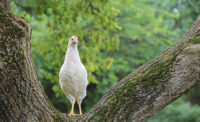If you work in the agriculture industry, it’s common knowledge that less than 2 percent of the country’s population works in it. Another widely recognized fact is fewer and fewer of our country’s citizens know where their food comes from — other than a grocery store. I suspect for many decades that was OK with farmers and ranchers. After all, their noble calling to provide a safe and wholesome supply of food to the country is not driven by a need for gratitude; it’s simply in their psyche.
Times are changing, though, and a growing number of people have questions about how their food is produced. While this new wave of interest is often attributed to the Millennial generation, it seems many others have inquiries as well. In similar fashion, we are seeing the same rise in interest from the regulatory community.
Roughly six years ago, the Animal Agriculture Discussion Group (AADG) was convened to determine whether animal agriculture and the Environmental Protection Agency (EPA) could work together collaboratively to address water-quality concerns. One of the first tools developed by the group was a pamphlet that discussed the beneficial uses of animal manure as an organic fertilizer. While the pamphlet addresses the benefits manure can provide, it rightly discusses its potential to affect the environment if it is handled improperly.
Over the years, this group has continued to confer though teleconferences and face-to-face meetings to keep the dialogue open. During the first week of October, the U.S. Poultry & Egg Association collaborated with a poultry company in northwest Arkansas to coordinate a tour of a poultry complex. This tour was scheduled after learning through ongoing discussions within the AADG that very few of the regulators had firsthand knowledge of the poultry industry and how it operates. Recognizing this as an opportunity to teach people outside the industry and respond to the growing level of interest, the tour provided an inside look to those unfamiliar with the poultry industry.
In addition to visiting a hatchery where the attendees learned how technical this operation is, they also had an opportunity to visit a poultry harvest plant and poultry farm that is home to a research project that tracks the potential for the migration of nutrients offsite.
As you may imagine, the reactions from the various attendees varied widely. The important thing is they were given full access, and they appreciated having an opportunity to expand their knowledge. Farmers, ranchers and many other stakeholders that work in the agriculture industry have a long history of protecting the environment, and with this growing level of interest we have an opportunity to share that story. The time has come, and we must.




Report Abusive Comment